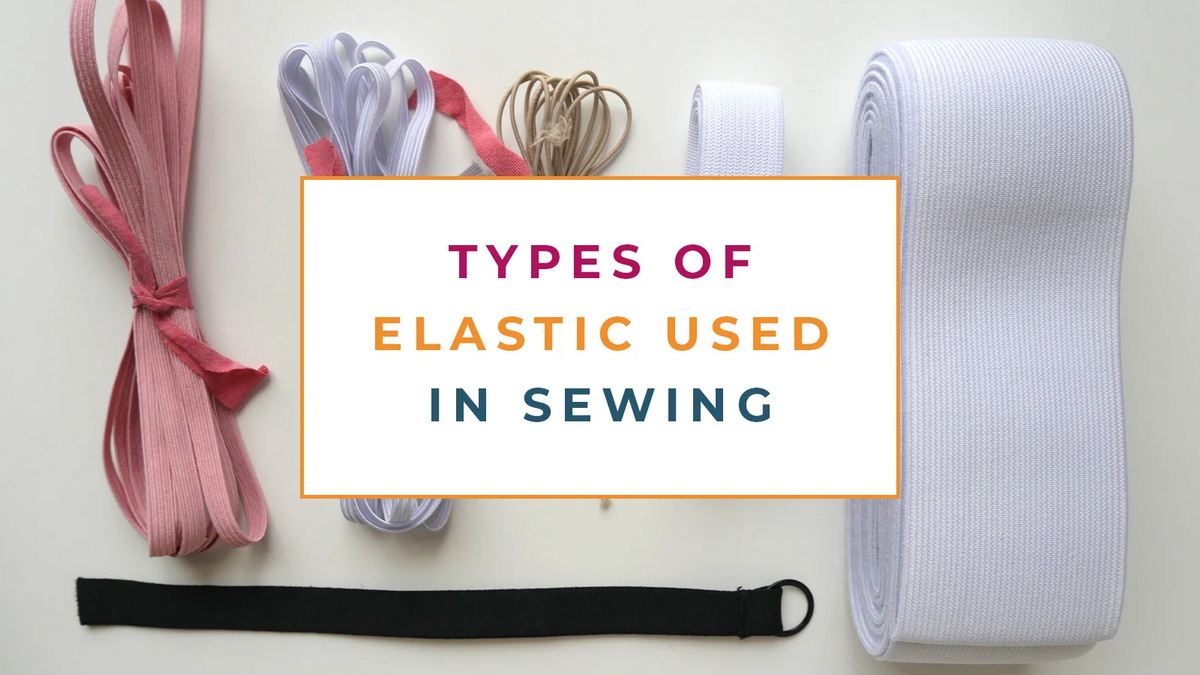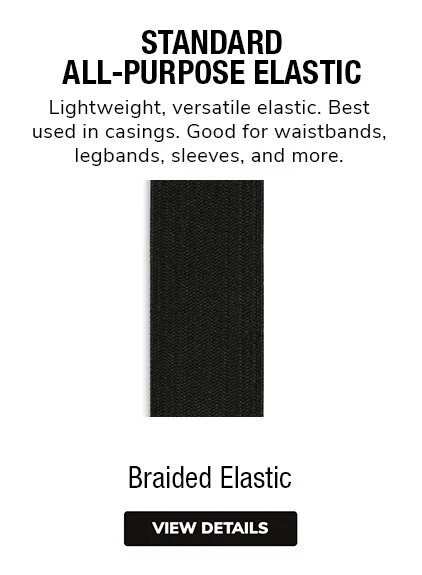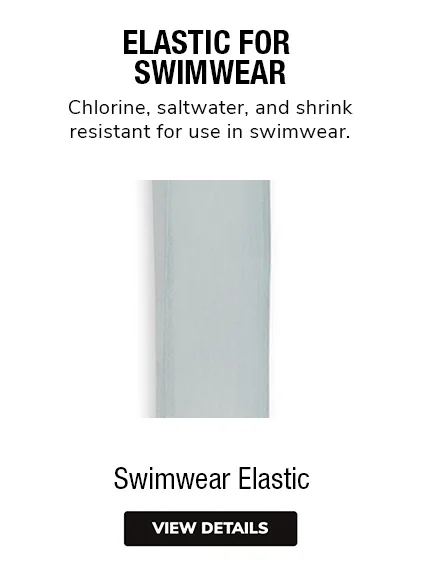Content Menu
● Understanding Swimwear Fabric
>> The Role of Elastic in Swimwear
● Types of Elastic Used in High-Quality Swimwear
>> 1. Rubber Elastic
>>> Properties
>>> Benefits
>>> Drawbacks
>> 2. Spandex (Lycra)
>>> Properties
>>> Benefits
>>> Drawbacks
>> 3. Polyester Elastic
>>> Properties
>>> Benefits
>>> Drawbacks
>> 4. Nylon Elastic
>>> Properties
>>> Benefits
>>> Drawbacks
● Manufacturing Considerations
>> Choosing the Right Elastic
>> Testing and Quality Control
>> Innovations in Swimwear Elastic
>> The Impact of Elastic on Performance
● Care and Maintenance of Swimwear Elastic
>> Washing and Drying
>> Storage
● Understanding Swimwear Fit and Sizing
>> Finding the Right Size
>> Customizing Swimwear
● Trends in Swimwear Design
>> Performance-Driven Designs
>> Fashion Trends
● Conclusion
>> Frequently Asked Questions (FAQs)
>>> 1. What is the best type of elastic for competitive swimwear?
>>> 2. Can I wash my swimwear with regular laundry?
>>> 3. How often should I replace my swimwear?
>>> 4. Is there eco-friendly swimwear available?
>>> 5. What should I look for when buying high-quality swimwear?
Swimwear is an essential part of summer fun, and the quality of the fabric and elastic used can significantly impact performance, comfort, and longevity. High-quality swimwear is designed to endure the rigors of water activities while allowing for freedom of movement. In this article, we will explore the types of elastic used in high-quality swimwear, focusing on their properties, benefits, and reasons for selection.

Understanding Swimwear Fabric
Before delving into the types of elastic, it's essential to understand the fabric that accompanies these elastics. The primary materials used in high-quality swimwear include:
- Polyester: Known for its durability and resistance to chlorine, polyester is a popular choice for competitive swimwear.
- Nylon: This fabric offers a smooth feel and excellent stretch, making it a favored option for both fashion and function.
- Lycra/Spandex: Often blended with other materials, Lycra provides exceptional stretch and recovery, allowing the swimwear to maintain its shape.
The Role of Elastic in Swimwear
Elastic serves several critical functions in swimwear:
1. Support: Elastic helps keep the garment snug against the body, preventing it from shifting during movement.
2. Comfort: The right elastic allows for stretch without compromising comfort, resulting in a better fit.
3. Durability: Quality elastic can withstand the effects of chlorine and saltwater, ensuring that the swimwear lasts longer.
Types of Elastic Used in High-Quality Swimwear
There are several types of elastic commonly used in high-quality swimwear, each with unique properties and benefits.
1. Rubber Elastic
Properties
Rubber elastic is the traditional choice for swimwear. It is made from natural or synthetic rubber and is known for its excellent stretch and recovery capabilities.
Benefits
- High elasticity: Allows for a snug fit without restricting movement.
- Durability: Resistant to wear and tear, especially in saltwater and chlorinated environments.
Drawbacks
- Degradation: Over time, rubber elastic can degrade due to exposure to UV light and chemicals, which may lead to a loss of elasticity.
2. Spandex (Lycra)
Properties
Spandex, also known by its brand name Lycra, is a synthetic fiber known for its exceptional elasticity. It can stretch up to five times its original length and recover its shape.
Benefits
- Superior stretch: Provides maximum freedom of movement, essential for swimmers.
- Shape retention: Maintains its elasticity and fit even after multiple wears and washes.
Drawbacks
- Cost: Higher quality spandex can be more expensive than other elastics.
3. Polyester Elastic
Properties
Polyester elastic is made from polyester fibers and is often blended with spandex for added stretch. It is known for its durability and resistance to chlorine.
Benefits
- Chlorine resistance: Ideal for competitive swimmers who frequently use pools.
- Colorfastness: Retains color well, ensuring the swimwear remains vibrant.
Drawbacks
- Less stretch: Compared to pure spandex, polyester elastic may not provide the same level of stretch.
4. Nylon Elastic
Properties
Nylon elastic is another popular choice for swimwear, offering a smooth texture and good stretch. It is often used in combination with other materials for enhanced performance.
Benefits
- Soft feel: Comfortable against the skin, reducing chafing during wear.
- Good stretch and recovery: Offers a balance between comfort and performance.
Drawbacks
- Less durable: May not be as resistant to chlorine as polyester.

Manufacturing Considerations
Choosing the Right Elastic
When manufacturers select elastic for swimwear, several factors are considered:
- Intended Use: Competitive swimwear requires different elastic properties than recreational swimwear, as the demands on performance and fit vary significantly.
- Cost: Higher quality materials can increase the overall cost of the swimwear, influencing the final price for consumers.
- Performance: The chosen elastic must meet the performance demands of the end user, ensuring that swimmers can perform at their best without discomfort.
Testing and Quality Control
High-quality swimwear undergoes rigorous testing to ensure the elastic performs as expected. This includes:
- Stretch tests: Evaluating how much the elastic can stretch and return to its original shape, which is crucial for maintaining fit and comfort.
- Durability tests: Assessing how well the elastic holds up against chlorine and saltwater to prevent premature wear.
- Comfort tests: Ensuring the elastic does not cause discomfort or chafing, which can be a significant issue for frequent swimmers.
Innovations in Swimwear Elastic
As technology advances, so does the development of swimwear materials, including elastic. Innovations include:
- Eco-friendly elastics: Sustainable materials are being developed to reduce environmental impact. Many brands are now focusing on using recycled materials in their swimwear production.
- Heat-resistant elastic: New formulations are being created to withstand higher temperatures, making them suitable for various water activities and climates.
The Impact of Elastic on Performance
The type of elastic used in swimwear can significantly impact a swimmer's performance. A well-chosen elastic allows for better movement, reduced drag, and enhanced comfort, all of which contribute to improved performance in the water.
In competitive swimming, for instance, the fit of the swimwear can influence a swimmer's speed. A snug fit, facilitated by high-quality elastic, minimizes water resistance, allowing athletes to glide more efficiently through the water.

Care and Maintenance of Swimwear Elastic
Washing and Drying
To prolong the life of swimwear elastic, proper care is essential:
- Rinse immediately: Rinse swimwear in cold water after use to remove chlorine and salt. This prevents the elastic from breaking down prematurely.
- Avoid heat: Do not wring out or expose the swimwear to direct sunlight or high heat while drying, as these can damage the elastic fibers.
Storage
Proper storage also plays a role in maintaining the elasticity of swimwear:
- Flat storage: Store swimwear flat to avoid creases that can damage the elastic. Hanging swimwear can stretch the elastic over time.
- Cool environment: Keep swimwear in a cool, dry place away from sunlight to prevent color fading and material degradation.

Understanding Swimwear Fit and Sizing
The effectiveness of swimwear elastic is also closely linked to proper fit and sizing. Swimwear that is too loose may lead to discomfort and reduced performance, while overly tight swimwear can restrict movement and blood circulation.
Finding the Right Size
Swimwear sizing can vary significantly between brands, so it's essential to refer to size charts and, if possible, try on different styles. Key considerations include:
- Chest, waist, and hip measurements: Ensure that the swimwear fits well in these areas, as this will determine how the elastic performs.
- Torso length: For one-piece swimsuits, the torso length can affect how the elastic supports the body.
Customizing Swimwear
Some brands offer customizable swimwear options, allowing swimmers to choose specific features, including the type of elastic and fit. This can be particularly beneficial for competitive swimmers who have unique requirements.
Trends in Swimwear Design
As fashion and performance converge, various trends are emerging in the swimwear industry that affect elastic use:
Performance-Driven Designs
Many brands are focusing on performance-driven designs that incorporate advanced materials and elastics. Features such as:
- Compression zones: These areas provide additional support and improve blood flow during intense activity.
- Seamless construction: Reduces chafing and enhances comfort, often using specialized elastics that lay flat against the skin.
Fashion Trends
Swimwear is not just about functionality; it's also a fashion statement. Bold patterns, vibrant colors, and innovative cuts are becoming increasingly popular. The choice of elastic plays a crucial role in maintaining the garment's shape while allowing for stylistic freedom.

Conclusion
In conclusion, the type of elastic used in high-quality swimwear plays a crucial role in determining the performance, comfort, and longevity of the garment. Rubber, spandex, polyester, and nylon elastics each offer unique benefits and drawbacks that cater to various swimming needs. As the swimwear industry continues to evolve, innovations in elastic materials will likely enhance the swimming experience further.
By understanding the different types of elastic and their properties, swimmers can make informed choices that enhance their performance in and out of the water. Whether for competitive swimming or leisure, the right swimwear elastic can make all the difference.
Frequently Asked Questions (FAQs)
1. What is the best type of elastic for competitive swimwear?
- The best type of elastic for competitive swimwear is typically spandex (Lycra) due to its superior stretch and shape retention.
2. Can I wash my swimwear with regular laundry?
- It is best to rinse swimwear in cold water and avoid washing it with regular laundry to prolong the life of the elastic and fabric.
3. How often should I replace my swimwear?
- Swimwear should be replaced every 6-12 months, depending on usage and care, to ensure optimal performance.
4. Is there eco-friendly swimwear available?
- Yes, many brands now offer eco-friendly swimwear made from sustainable materials, including recycled elastics.
5. What should I look for when buying high-quality swimwear?
- Look for materials like polyester and spandex, check for chlorine resistance, and ensure proper fit and comfort.






































